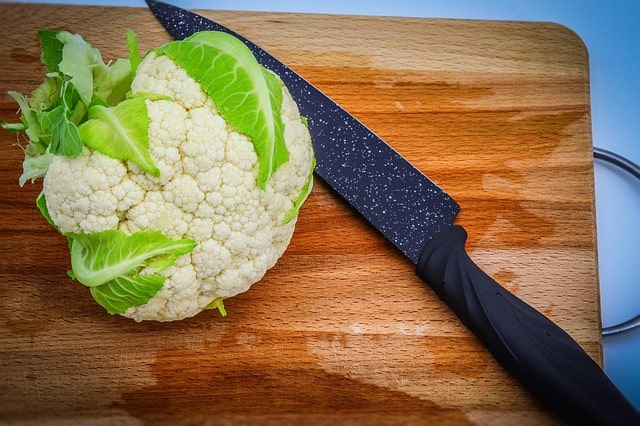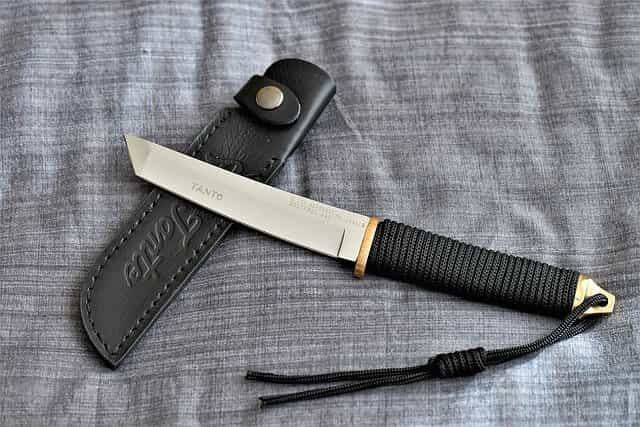I have almost exclusively used stainless steel knives all my life, and I know that the same is true for most of you. While I don’t plan on switching the core material of my blade anytime soon, it helps to keep an open mind that there are other materials out there.
One of these is ceramic.
Knowing how fragile and brittle ceramic can be, why would anyone put it on a knife? Even if they did, what are ceramic knives used for – or are they just another gimmick?
Continue reading to find out what these knives are used for – and every other thing you might have wanted to know too.
Table of Contents
What Are the Benefits of Ceramic Knives?

As you would expect, there are a series of real-world reasons why anyone would want to choose a ceramic knife over the stainless-steel option.
Now, I am not saying that these reasons would convince you, but it is enough for those who like these knives. Here are a few:
#1 Ceramic is more ‘stainless’ than steel
Stainless steel will still stain when it comes in contact with some food items. Mainly due to the iron concentration (and sometimes the carbon content), stainless steel knives may react with acidic foods.
Ceramic, on the other hand, does not get affected by these caustic food items. This makes it a great pick for cutting cheese, citrus fruits, and other acidic food items.
#2 Ceramic blades will never rust
Well, unless they had an iron handle. Even in that case, it is the handle of the knife that rusts, not the ceramic blade itself.
In my guide to removing rust from your knife, I explained that rust needs iron (one of the must-present factors) to happen. Since ceramic neither contains iron nor is it metallic, you don’t have to worry about rust.
Note that this does not mean you can neglect to take care of the ceramic blades. Always follow proper knife maintenance and care practices to ensure your knives last longer.
#3 Ceramic blades clean very fast
Ceramic is non-porous and, like stainless steel, also washes off very fast.
When cutting extremely juicy food items that tend to stain blades a lot, you might want to bring out your ceramic blades. You know that you have an easy clean in front of you when you are done.
Always remember that knives are not dishwasher safe – and your ceramic blades are not left out here. You risk doing a lot of damage to the ceramic blade here than with stainless steel.
#4 Ceramic knives are better in hotter conditions
Ceramic is non-conductive so the heat energy from whatever you are doing is not transferred into the knife. Stainless steel, being the metal alloy that it is, will transfer this heat energy through the metal and to your hands too.
While this is a fine thing to note on ceramic knives, it could also be the greatest undoing of the blade. Since ceramic is brittle, too much heating can cause it to break and crack.
#5 Ceramic knives are lightweight
Perhaps another consideration is that a ceramic knife tends to be more lightweight than a steel knife of equal standing. For most people, this means they don’t have to exert as much effort when cutting and would not have to deal with the strain on their hands too.
If you don’t do a lot of cutting, I’m sure you would still notice the weight difference but would never need to worry about your hands either.
Ceramic Vs Stainless Steel Knives: Which Should You Pick?

After everything that I have mentioned above, a stainless-steel knife can never be replaced by your ceramic knives. It can be complemented by one, but it can never be replaced by it.
A sturdy stainless steel knife will always have the following advantages over your ceramic knife:
- Ease of sharpening – Take a stainless steel knife through the whetstone sharpening guide and you have a sharp knife. You can even choose to go with alternative forms of sharpening. With a ceramic knife, the sharpening process is more challenging, and you need special tools.
- Chipping is dangerous – Stainless steel knives chip too, which is why I have an entire guide dedicated to it. However, I would assume that for every one stainless steel knife that chips, several ceramic knives have chipped off already.
- Stainless steel is plenty sharp too – Some users will argue that ceramic knives tend to be sharp and hold their edge well. My take is, have you ever used a quality high carbon stainless steel blade? Of course, the maintenance might be on the high side, but it’s worth the sharpness.
- Ceramic knives are brittle – I know you know this already but I just had to bring it back. I would rather have a knife that I didn’t have to baby more than I already pamper my blades. I need a tool, not a toy.
- Limited storage options – Off the top of my head, I can recall that you can never use a magnetic knife strip for your ceramic knives. Where is the metal content to hold them?
- The seamless experience – You might be wooed by the sharpness of the ceramic knives that you don’t know that they could be too sharp for comfort. Where a stainless steel blade provides a seamless experience, you are always trying to get the right cutting pressure on your ceramic knives.
These do not mean that ceramic knives are not good. After all, I just went over why they are all the rave – and some of those points even show that they are somewhat better than stainless steel knives in some areas.
Overall, though, stainless steel continues to edge (see that pun?) them out.
Do You Want to Buy Ceramic Knives?
Before buying anything at all, especially knives, I like that you know the pros and cons of your purchase. Now that you have read the above, if you are still interested in having ceramic knives, Kyocera is the brand I would recommend to go with.
They have this affordable 3-Piece Revolution Series ceramic price set (check availability on Amazon) that gets the job done fine. Coming with a chef knife, serrated knife and paring knife, it’s all the basics you need in one place.
Otherwise, you can go here to find a stainless steel knife buying guide that will help you to choose individual knives or knife sets better.
Frequently Asked Questions
Find answers to some other questions that you might have had about ceramic knives here.
Can you cut meat with a ceramic knife?
You can cut already processed meat into smaller pieces with a ceramic knife, just as you would use a home kitchen knife. However, ceramic knives are not for cutting larger meat portions, especially with the bones in them.
Even with stainless steel knives, it is not recommended that you use the wrong kind of knife on bony parts of meat. That is why even butchers have special knives that help them perform this operation seamlessly without damaging the knife.
If you don’t want the full weight of the meat cleaver or butcher knife, but still want something good enough to cut meat, check out the Coolina Serbian knife for a change.
Can ceramic knives break?
Ceramic knives can be very hard but they are equally brittle, making them susceptible to chipping and breaking.
Ceramics cannot flex as much as stainless steel would which could cause the knife to break when you are twisting it inside food. Ceramics, being brittle, can also break on impact – which could happen if the knife were to fall to the ground.
How do you maintain a ceramic knife?
Ceramic knives should enjoy the majority of the same knife best storage practices and recommended care strategies too. Beyond that, ceramic knives are not dishwasher safe, neither should you attempt to put them up on a magnetic storage strip.
Find the right mode of storage, and keep the knife away from harder surfaces that can cause them to chip on impact.
While you won’t have to sharpen these knives as much since they hold their edges for longer, you would need to invest in a good ceramic knife sharpener to get this done by yourself. I’d recommend this Advanced Diamond Hone Sharpener from the trusted Kyocera brand for its ease of use, practicality, and affordability, among other things.
Should you buy a ceramic knife set?
If this is your first time using a ceramic knife, you don’t have the luxury of experience to call on. Thus, I would advise that you start with a single unit rather than buying the entire knife set.
Most people don’t need knife sets and can do with getting just a chef/ santoku knife, paring knife, and serrated blade.
I’d recommend that you buy a chef knife with a ceramic blade first. Since chef knives can be used for a lot of things, you can get a general feel of these knives better with one. Depending on your experience, you could then choose to stick with the material or come back to the stainless steel fold.






![Anatomy of a Knife: All Parts of a Knife Blade [+ Buying Guide]](https://cutsandcarves.com/wp-content/uploads/2021/05/Anatomy-of-a-Knife-All-Parts-of-a-Knife-Blade-Buying-Guide-768x1025.jpg)
